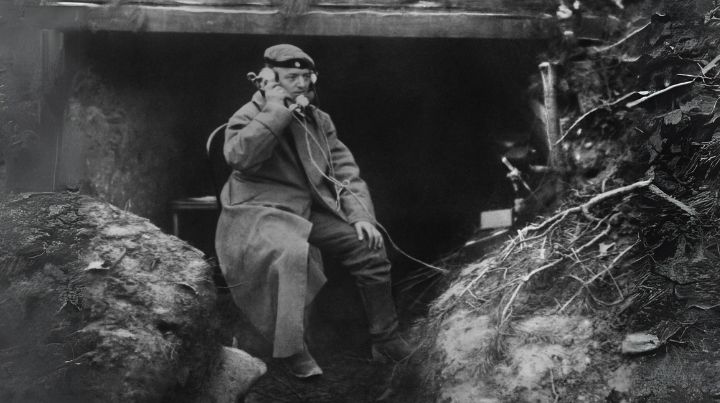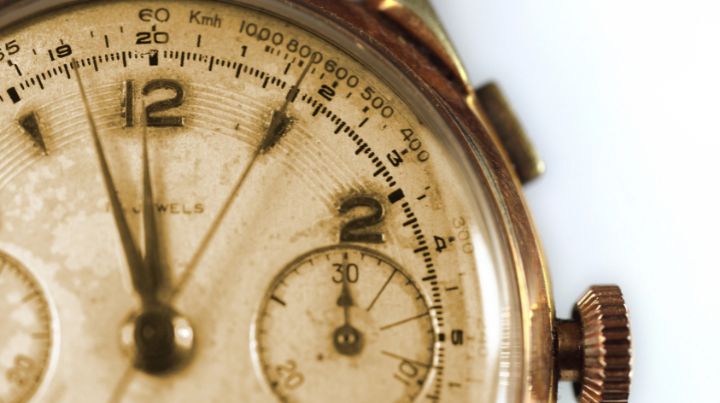Inventions of World War 1 That Influenced the World


Podcast: Play in new window | Download
Have you ever looked at an item that you use almost daily and wondered about its history? It turns out, a lot of things we use every day were inventions of World War 1.
The Inventions of World War 1
Here are six inventions of World War 1 in particular that have had a significant impact on society. Did you know that these everyday items and ideas were invented during that era?
- Trench Coats
- Daylight Savings Time
- Pilotless Drones
- The Wristwatch
- Zippers
- Stainless Steel
Let's take a closer look at these inventions of World War 1.
Trench Coats
Trench coats were not created to be fashionable. Designers created them purely to satisfy a practical need. That need was to replace the heavy wool greatcoats issued to British military officers. While the wool coats provided warmth, they also became cumbersome when wet, making movement more difficult.

As they say, necessity is the mother of invention. British soldiers serving in the trenches during World War I needed a more practical option to the wool greatcoat. The English clothing industry came up with one of the inventions of World War 1, still commonly worn today. They created the early version of the modern trench coat. The trench coat had many benefits over the long wool greatcoats. It was lightweight, waterproof, and made with deep pockets for holding maps and other necessities. Trench coats also had waist belts consisting of metal rings for carrying needed equipment.
Daylight Savings Time
Benjamin Franklin is credited with the idea of putting clocks forward during the spring and back in the fall. It was in a 1784 letter to a French newspaper where Franklin first suggested that candles were wasted during the summer. His reasoning was because the sunset before people went to bed, so in turn, they lit candles to see. Likewise, he believed that people wasted daylight by sleeping well past the sunrise.
It wasn’t until World War I that daylight savings time became a reality. It was instituted due to the demands of the war and coal shortages. Germany mandated that on April 30, 1916, clocks be moved forward from 11:00 p.m. to midnight. They hoped the extra hour of daylight in the evenings would use less coal for heat and light.
Britain followed Germany’s example and initiated daylight savings time on May 21, 1916. Other European countries soon made the transition as well. Eventually, on March 19, 1918, following its entry into the war, the US implemented daylight savings time. The US also established time zones to help in the war effort.
Following the signing of the armistice that ended the war, daylight savings time also came to an end. However, as history has shown (and to the dismay of parents everywhere), the idea of daylight savings time would return.
Pilotless Drones
The first use of crewless aerial vehicles happened on July 12, 1849. This first attempt by the Austrians at using unmanned balloons to carry explosives over the besieged city of Venice was a failure due to unfavorable winds. However, while the young artillery officer who created the idea failed on his initial attempt, his second effort on August 22, 1849, achieved a small level of success.
While the attempt to float pilotless explosives-laden balloons over Venice was only marginally successful in damaging the city, it psychologically affected the population. The psychological impact and other stresses of the siege pushed Venice over the edge and resulted in their surrender two days later.
Meanwhile, the first use of a pilotless, motorized aircraft took place on Long Island, New York, on March 6, 1918. Two Navy inventors designed a pilotless aerial bomb. In short, their brainchild combined two inventions of World War 1 at the same time. While creating the first motorized uncrewed aerial vehicle, the two inventors simultaneously created the first cruise missile.
With a wingspan of just under 19 feet and a 12-horsepower, the pilotless aircraft weighed 175 pounds. Gyroscopes and an altitude-limiting barometer launched the plane into the air, pointing it in the general direction of its target.
Unfortunately for the two inventors, the crewless aerial vehicle was too inaccurate to be reliable. This inaccuracy caused the Navy, in 1925, to shelve the program, for the time being, putting off the progress of drone technology until a later date.
The Wristwatch
While wristwatches were not actually invented for the troops in World War 1, they surged in popularity because of the war. This surge in demand made wristwatches the primary method of keeping track of time following World War 1.

Men wealthy enough to afford a watch carried it in their pocket, secured with a chain through the early part of the 20th century. Therefore, with men insistent upon carrying watches in their pockets, it was up to women to set the foundation for the widespread use of wristwatches. In particular, Elizabeth I would strap a small clock to her wrist to tell the time.
As the war raged on, though, the ability of military officers to synchronize events while keeping both hands free became more critical. Watch manufacturers created wristwatches to help soldiers and pilots tell the time without having to dig into a pocket for a watch.
One of the main drivers for using the wristwatch was the “creeping” artillery barrage tactic. Artillery fire covered advancing infantry during “creeping” barrages. Officers synchronized artillery fire just in front of the infantry advance with precise timing due to limited communication. Military units scheduled and coordinated their exact movements. To avoid being blown up by their own artillery, infantry leaders required a readily available watch.
The use of the wristwatch in the war became so predominant that the New York Times released an article about their use on July 9, 1916. That article stated that accurate timing was so crucial that portions of the military made wearing a wristwatch a requirement. The European army and navy adopted the use of “strap watches.” Eventually, civilians discovered they preferred them to the pocket watch.
Zippers
Inventors worked to find an easy and reliable means of securing clothing while also keeping the weather out. The first known person to make an effort at this was Elias Howe, the inventor of the sewing machine. Howe’s attempt to create what would eventually become the zipper ended with his receiving a patent for the “Automatic, Continuous Clothing Closure” in 1851.
It wasn’t until nearly fifty years later, though, that Whitcomb Judson produced and promoted a zipper-like device. Unfortunately, this early version of the zipper did not meet with much commercial success. Instead, it wasn’t until a Swedish-born American citizen named Gideon Sundback became involved that what we now call the zipper came to be.
Gideon, an engineer by trade, worked on the design, coming up with the modern zipper in 1913. Eventually, he received a patent for the “Separable Fastener” in 1917. According to History.com:
…the “hookless fastener” was perfected by Gideon Sundback during World War I. The first major order of zippers came for money belts worn by soldiers and sailors who lacked uniform pockets. While buttons remained the convention on military uniforms during the war, zippers began to be sewn into the flying suits of aviators and took off in popularity in the 1920s.
B.F. Goodrich’s used the fasteners in rubber boots and coined the term “zipper.”
For the two decades that followed, zippers primarily secured rubber boots and tobacco pouches. Then, in the mid-to-late 1930s, the fashion industry began incorporating zippers into clothing. Once accepted by the fashion industry, the use of zippers became the norm, with tens of thousands of miles of zippers now produced around the world.
Stainless Steel
Harry Brearley, from Sheffield, England, is credited with inventing “rustless” steel, now known as stainless steel. One of the most important inventions of World War 1 was created by accident.
Brearley was working on a solution for the problem of corrosion (aka rust) in military weapons. In 1913, Brearley noticed some of his prior “failed” attempts in the scrap heap showed resistance to corrosion. These “failed experiments” ultimately proved successful. Rust-resistant steel was formed by adding a mixture of approximately 13% chromium to molten iron. This led the way to future developments with improved metals.
The world soon realized the benefit of stainless steel. Its use in the production of tools, cutlery, and the medical industry began. The use of stainless steel expanded up through modern times, where, in 2010, over 31 million metric tons of stainless steel were produced.
The Bottom Line on Inventions of World War 1
Benjamin Franklin said,
“As we enjoy great advantages from the inventions of others, we should be glad of an opportunity to serve others by any invention of ours, and this we should do freely and generously.”
The fact that many of the inventions of World War 1 are still widely used today for non-military purposes is a testament to human ingenuity.
Do you know of any other inventions of World War 1 that are still in use? Let us know about it in the comments below.
Stay safe,

Related Articles
FREE Guide
Read the Best Seller
Join Mind4Survival
Stay informed by joining the Mind4Survival! 100% Secure! 0% Spam!
Affiliate Disclosure...
Mind4Survival is a free, reader supported information resource. If you make a purchase through our link, we may, at no cost to your, receive an affiliate commission.
Do You Want To Be Ready No Matter What?

Download our free 39-page guide with interactive, 7-Day Emergency Kit Checklist and take the first step toward real preparedness.
- Know exactly where to start.
- Save time and money.
- How-to build a complete Basic Emergency Kit.
- Level up your safety and security.
Join Mind4Survival
Stay informed by joining the Mind4Survival! 100% Secure! 0% Spam!





